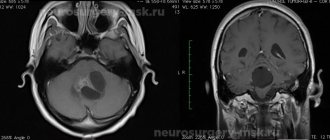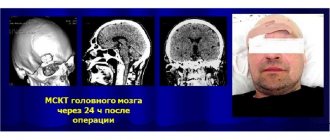Varieties
Sensitivity disorders are divided into two groups - increased or decreased.
Reduced ones include analgesia, hypoesthesia, and termanesthesia. With analgesia, a person does not feel pain; it can occur in many diseases and injuries of the nervous system. Hypoesthesia is manifested by a decrease in tactile sensitivity; the patient does not respond to skin punctures or insects crawling on the body. Thermaneesthesia is characterized by a violation of the perception of temperature conditions (warm and cold influences).
Increased sensitivity distinguishes terms such as hyperalgesia, hyperesthesia and hyperpathia. Hyperalgesia is a pathologically increased perception of pain; sharp or increased perception of stimuli is called hyperpathy. In this condition, the unpleasant sensations continue for quite a long time, the patient cannot determine the exact location and the sensations of irritation continue longer than contact with the irritant occurs. Hyperesthesia is an increased perception of stimuli, but at the same time the patient is able to sense the correct location of the stimulus and what type of impact.
Disorders in which the patient perceives a single effect as multiple are called polyesthesia. Allocheiria is a condition in which the patient feels irritation not at the site of its impact, but in the same areas on the opposite side of the body. With dysesthesia, there is a perverted perception of stimuli, that is, their confusion. When exposed to pain, the patient may feel warmth; when exposed to low temperatures, a tingling sensation. Paresthesia is a spontaneously occurring and short-term sensation of numbness, burning and a feeling of “crawling sensations”.
Types of sensory disorders
Violations are divided into several subgroups: decreased sensitivity, increased sensitivity.
Decreased sensitivity
Decreased sensitivity is divided into three pathologies: analgesia, hypersthesia and thermaneesthesia. Analgesia is the disappearance of sensitivity to pain, a symptom of many diseases and injuries of the nervous system. Hypesthesia is a decrease in tactile sensitivity. Thermaneesthesia is the loss of perception of cold and heat.
Increased sensitivity
Increased sensitivity includes hyperalgesia, hyperesthesia and hyperpathy. Hyperalgesia is a pathologically high sensitivity to pain. Hyperesthesia is an increase in tactile sensitivity. Hyperpathy is the occurrence of a strong feeling of unpleasantness when exposed to a stimulus. The sensation often persists for a long time even after the stimulus has stopped.
Quantitative sensory disorders
1.Anesthesia
- complete loss of sensitivity;
By origin
: pathological, artificial (iatrogenic)
Depending on the nature of sensitivity disorders
tactile anesthesia, pain analgesia, topalgesia, total anesthesia.
2. hypoesthesia
– decreased sensitivity in general or certain types of it.
3. Hyperesthesia
- increasing the body's sensitivity to the action of various types of stimuli.
By nature: tactile, pain, temperature, tophypesthesia
By volume: total, partial
Quality
1. Dysesthesia:
-may manifest itself as a distortion of heat and cold perception. Temperature effects in this case will be perceived as painful (thermalgia).
- Polyesthesia - the action of one real stimulus is perceived as
many influences.
- synalgia - associated with a distortion of the perception of the localization of a painful stimulus, when the real place of influence of the altering factor is replaced by another.
-hyperpathy is a painful, unpleasant perception of various sharp stimuli without a clear localization of the impact.
2.paresthesia
– an unusual sensation in the form of tingling, numbness, a feeling of “crawling goosebumps”, distortion of pain and temperature effects., is associated with the influence of external irritants and occurs as a result of vascular disorders or diseases of the nervous system.
Mechanisms of sensory impairment
Depending on the location, there are 3 main types.
1.receptor.
Receptors generate a receptor generator potential, which is transformed into AP
Occurs when: - a decrease in the number of receptors, their density in tissues (with a direct effect on neurons of viruses, bacteria, hypoxia)
-changes in sensitivity to irritants (inflammation, allergies)
Conductive
Occurs when there is damage to the periphery of the nerves, dorsal roots of the spinal cord, conductive tracts and neuron str-r of the spinal cord and medulla oblongata.
If the nerve conductors are damaged, all types of sensations are turned off.
Damage to the spinal ganglia, dorsal roots of the spinal cord - shutdown of all types
If the posterior horns are affected, temperature and pain are turned off, proprioceptive is preserved
With a half transection of the spinal column (Brown-Séquard syndrome): on the side of the transection below its level, deep proprioceptive sensitivity disappears, while temperature and pain sensitivity are absent on the opposite side.
Central
In case of damage:
thalamus, postcentral gyrus, parietal lobe of the cerebral cortex.
Lesions of the thalamus - cross reduction or loss of all types of sensitivity (hemianesthesia). In some cases, it is possible to develop high-intensity thalamic pain, loss of muscle-joint sensation, and the occurrence of contralateral sensory ataxia.
Damage to the posterior central gyrus and parietal lobe causes a cross-sectional decrease or loss of all types of sensitivity on the opposite side.
Damage to the parietal lobe leads to a complex of disorders known as amorphosynthesis. In this case, the idea of the spatial arrangement of body parts on the opposite side is lost; a person may even deny the presence of half the torso and not notice the development of hemiplegia. In some cases, damage to the parietal lobe of the cerebral cortex leads to the development of agnosia - the inability to indicate parts of the body, objects, and their location in space.
PAIN
- this is an unpleasant sensation and emotional experience, combined with existing or possible tissue damage, or described by the patient in terms of such damage. This definition expresses the relationship between the objective, physiological aspects of the feeling of pain and its subjective, emotional and psychological components. The response to pain can vary significantly not only between different people, but also within the same person, depending on the conditions under which it occurs.
In our opinion, PAIN
is a condition characterized by enhanced ascending nociceptive afferentation from peripheral receptors or central modulation (sensitization) of the perception of pain, which is accompanied by a change in the nature of efferent nervous and hormonal influences on peripheral organs and tissues, the development of nonspecific reactions of adaptation and damage.
pain components
: · Sensory – caused by direct irritation of nociceptors located in the skin, transmits information about the location, time of action and intensity of the pain impulse.
· Affective (emotional) – as a true sensory modality, pain causes affects (usually unpleasant), changes, worsens general well-being, and introduces a feeling of mental discomfort.
· Autonomic – due to the fact that the nociceptive effect, in addition to sensory sensation, is accompanied by reflex excitation of the autonomic nervous system. Sometimes the autonomic component is excessively expressed, especially with visceral pain (for example, acute pancreatitis is accompanied by nausea, vomiting, increased sweating and a drop in blood pressure). 24
· Motor – reflex of avoidance or defense, especially important in the case of true nociceptive (damaging) stimuli, forms behavioral reactions during painful exposure.
In addition, it has long been known that there are two types of pain:
q “quick”, sharp, acute, clearly localized pain that occurs immediately after damage (prick, blow, cut, electric current). This type of pain was previously called epicritic pain.
q “Slow”, protopathic, more ancient in evolutionary terms, occurs in response to any stimulus. The pain is painful, nagging in nature, does not have a clear localization, there is no adaptation to it, it usually occurs with diseases of the internal organs.
Specificity theory
is that for the emergence
pain sensation requires the presence of specific receptors
(nociceptors), specific pathways, specific nerve
centers, the activation of which results in the sensation of pain.
The founders of this theory were Avicenna and Descartes, but it
was finally formulated by M. Frey. Founders of the theory
specificity were among the first to try to reveal the mechanisms
formation of pain during damaging influences and in
historically played an important role.
Intensity theory
. According to this theory, pain does not arise in
as a result of irritation of specific receptors, and as a result of summation
intensity of excitations arising in all types of modalities.
Painful sensation occurs due to excessive activation of various
receptors, while the impulse is carried out by the same
structures that take part in the formation of ordinary
sensations. In this case, the intensity and
duration of exposure to receptors. Information about the strength of the damaging
agent is encoded in the nature of the impulse activity of afferent
neurons.
Gate control theory
"explains the formation of nociceptive
flow at the level of spinal cord segments based on convergence
excitations from fast-conducting (myelin) and slow-conducting
(unmyelinated) fibers on the first switching neurons of the spinal
brain (the so-called “pain sensitivity relay”) (Fig. 3).
Afferent impulses traveling along myelinated fibers
simultaneously with the activation of relay neurons, excite through collaterals
neurons of the gelatinous substance (substantia gelatinosa). The latter, in their
turn, depolarize primary myelinated afferents and thus
most limit their excitatory effect on relay neurons. So
Thus, further in the ascending direction there passes a short nociceptive30
information that forms epicritic pain. When the thin parts are excited
unmyelinated fibers neurons of the substantia gelatinosa
are inhibited, resulting in their limitation
depolarizing effect on presynaptic terminals. Afferent
nociceptive information coming to relay neurons activates
them and forms the transmission in the upward direction of the flow of impulses,
reflecting slow protopathic pain.
The theory of "discriminators of afferent flow density"
»
explains the formation of various types of pain from the perspective of changes in frequency
and synchrony of afferent impulses in nociceptive conductors during
action of nociceptive stimuli. Synchronized nerve activity
conductors excites neurons - flux density discriminators,
the activity of which subsequently determines the sensation of pain. 31
The theory of “generators of pathological excitations of the central nervous system”
interprets
mechanisms of central and deafferentation pain
syndromes, in particular phantom pain. According to this theory, pain
sensations can be modulated in central structures associated with
processing of nociceptive information. In the regulatory structures of the central nervous system
a generator of a pathologically amplified impulse is formed. Basis
the formation of a generator of pathological excitations is
failure of inhibitory control of certain neuronal populations, such as
primary, due to a direct violation of the braking mechanisms,
and secondary, associated with the absolute predominance of activating
influences on this group of neurons. In the initial stages, provoking
the stimuli for the pathologically amplified impulse generator are
modally specific (nociceptive) afferents; in the future he
can also be activated by non-nociceptive influence.






